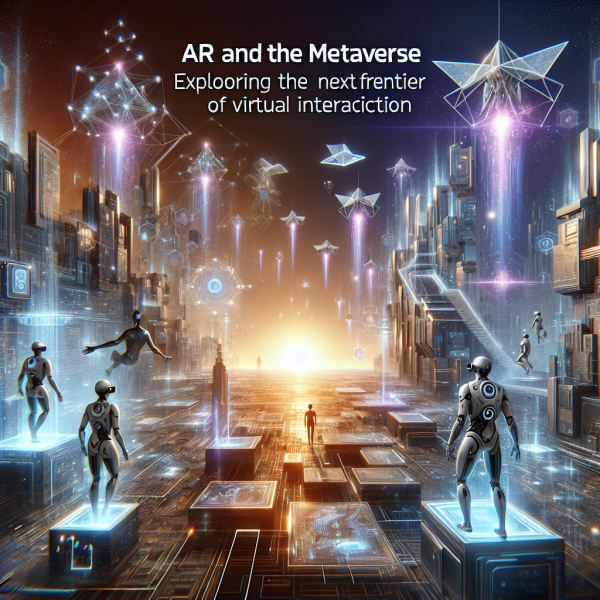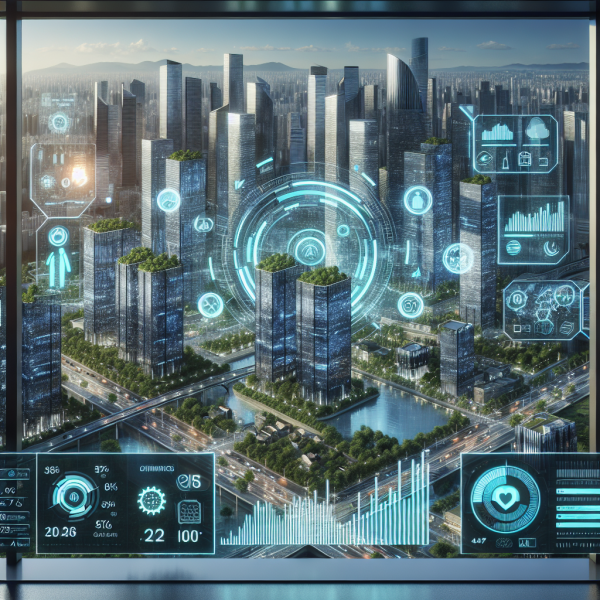Building the Future: AR Innovations That Are Reshaping Architecture and Design

In the realm of architecture and design, the landscape is being dramatically altered by the advent of Augmented Reality (AR). By overlaying digital elements onto the physical world, AR provides architects, designers, and clients with innovative tools that enhance creativity, streamline collaboration, and improve project outcomes. As we embrace this technology, the potential for reshaping the future of built environments and urban landscapes becomes extraordinarily exciting.
The Intersection of Technology and Creativity
At its core, AR merges the digital and physical realms, allowing designers to visualize their concepts in a real-world context. For architects, this integration means transforming sketches and models into immersive experiences. Platforms like Microsoft’s HoloLens and Magic Leap are at the forefront, enabling professionals to project 3D models of buildings onto a site, facilitating real-time adjustments and visualizations.
This technology breathes life into the design process. Rather than relying solely on physical models or 2D representations, architects can explore unprecedented levels of detail and interactivity. Imagine walking through a space that isn’t yet built, adjusting spatial dimensions, materials, and finishes—all while collaborating with stakeholders, clients, and contractors. AR empowers architects to see their designs materialize, fostering a deeper understanding of how spaces will function.
Streamlining Communication and Collaboration
One of the most significant challenges in architectural projects is the alignment of various stakeholders—clients, designers, contractors, and regulatory bodies. Miscommunication can lead to costly delays and rework. AR helps bridge this gap by providing a shared, interactive platform.
For instance, a designer can present a project to clients using AR, allowing them to visualize changes or modifications in real-time. This kind of interaction minimizes misunderstandings, as clients can “walk through” the digital space and provide instant feedback. Furthermore, contractors can reference AR visualizations on-site, ensuring that they adhere closely to the intended design and specifications.
This form of collaboration isn’t limited to large firms; smaller studios can leverage AR tools to compete with bigger players, democratizing access to sophisticated design processes. Startups like Enscape and IrisVR are making high-quality AR and VR tools more accessible, allowing firms of all sizes to harness this technology.
Enhancing Sustainability in Design
As global concerns about climate change and the environment intensify, architectural practices are adopting sustainable methods of design and construction. AR plays a pivotal role in this shift by allowing architects to simulate environmental impacts and optimize their designs for energy efficiency.
For instance, AR software can provide visualizations of a building’s energy use over time, indicating how different designs respond to natural light, weather patterns, and ventilation. Designers can make informed decisions about materials and layouts that will not only enhance aesthetic appeal but also promote resource conservation and sustainability.
Additionally, by visualizing how a building interacts with its surroundings, architects can mitigate the ecological impact of their structures. This foresight is crucial in urban design, where issues like heat islands and biosphere preservation are increasingly relevant.
The Future of Urban Planning
AR’s influence extends beyond individual buildings to entire cityscapes. Urban planners can utilize AR to simulate future developments in conjunction with existing structures and landscapes. This technology allows stakeholders to visualize potential changes to urban areas—like transportation systems, green spaces, and residential developments—before any physical work begins.
Public engagement is also enhanced through AR. City residents can visualize proposed developments directly in their neighborhoods, creating opportunities for community feedback and engagement. This inclusive approach to planning fosters a sense of ownership and collaboration among citizens, ultimately leading to a more harmonious integration of new structures within the urban fabric.
Conclusion: Embracing the Future
As we stand at the cusp of this technological revolution, the integration of AR in architecture and design presents both exciting challenges and opportunities. The ability to visualize, collaborate, and innovate in real-time heralds a new era for architects and designers, where creativity and functionality coexist more harmoniously.
As AR technology continues to evolve, the possibilities for its application in architecture are boundless. Buildings will no longer simply be structures to inhabit; they will become experiences woven into the fabric of our lives. By embracing AR innovations, architects and designers are not only reshaping their practices—they are building the future of how we experience and interact with our environments. With this mindset, we can look forward to an era characterized by enhanced creativity, collaboration, sustainability, and community engagement, all encapsulated within the architectural wonders of tomorrow.













